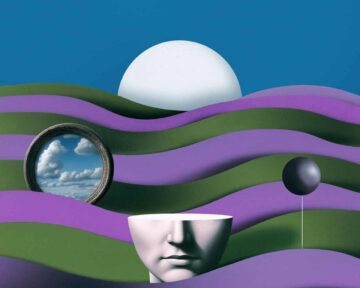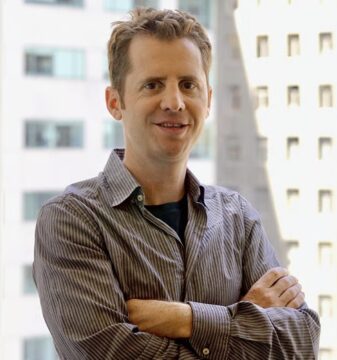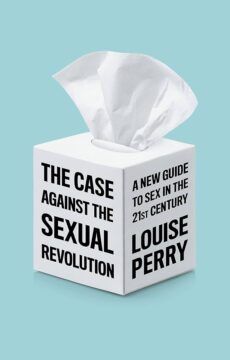Marzio Mian in The Guardian:
 Albanians call Sazan Ishulli i Trumpëve – Trump Island. Until now mostly untrammelled by development, it is on the verge of becoming a mecca for ultra-luxury tourism, another addition to Ivanka Trump and Jared Kushner’s real-estate portfolio. Speaking on the Lex Fridman podcast in July 2024, Trump could barely conceal her excitement: “I’m working with my husband, we have this 1,400-acre island in the Mediterranean and we’re bringing in the best architects and the best brands,” she said. “It’s going to be extraordinary.”
Albanians call Sazan Ishulli i Trumpëve – Trump Island. Until now mostly untrammelled by development, it is on the verge of becoming a mecca for ultra-luxury tourism, another addition to Ivanka Trump and Jared Kushner’s real-estate portfolio. Speaking on the Lex Fridman podcast in July 2024, Trump could barely conceal her excitement: “I’m working with my husband, we have this 1,400-acre island in the Mediterranean and we’re bringing in the best architects and the best brands,” she said. “It’s going to be extraordinary.”
When I reached Kushner by phone the same month, I detected brimming enthusiasm for Sazan, which he seemed to regard as something of a treasure. He said he plans “to create the ideal resort that I’d want to be at with my family and with my friends”.
Before I visited the island, I marvelled at the thought of traversing its roughly 40 miles of trails, climbing its mountains covered in rainforest and exploring its deep waterways with names such as the Bay of Paradise, Hell’s Gorge, Devil’s Gulf and Admiral’s Beach. I wanted to see it before the phrase “I’m going to Sazan” becomes the prerogative of the rich.
More here.
Enjoying the content on 3QD? Help keep us going by donating now.

 A
A  I
I  The end of Anna Wintour’s 37-year run as editor in chief of Vogue was a lot less dramatic than its beginning. Back in 1988, magazines ruled fashion, anointing people and decreeing trends, and it was a cloistered world of high drama and
The end of Anna Wintour’s 37-year run as editor in chief of Vogue was a lot less dramatic than its beginning. Back in 1988, magazines ruled fashion, anointing people and decreeing trends, and it was a cloistered world of high drama and  I skirted an abandoned development of some kind, half-built, its windows smashed, wild dogs on its concrete foundation barking at me not to come any closer…
I skirted an abandoned development of some kind, half-built, its windows smashed, wild dogs on its concrete foundation barking at me not to come any closer… OpenAI had stunned the world by releasing ChatGPT in November 2022, but it turns out that the researchers working on the technology were even more stunned at what they’d developed.
OpenAI had stunned the world by releasing ChatGPT in November 2022, but it turns out that the researchers working on the technology were even more stunned at what they’d developed. There is clearly a groundswell of anti-MAGA political energy across the country, and yet the most recent Quinnipiac University
There is clearly a groundswell of anti-MAGA political energy across the country, and yet the most recent Quinnipiac University  This Buddha — its head and shoulders the color of translucent flames, its torso pockmarked by wounds, its robes a rich burgundy — is the manifestation of an idea of art that’s both dazzlingly new and profoundly ancient. If you’ve not seen anything quite like it — well, neither have I. (It’s on show at the
This Buddha — its head and shoulders the color of translucent flames, its torso pockmarked by wounds, its robes a rich burgundy — is the manifestation of an idea of art that’s both dazzlingly new and profoundly ancient. If you’ve not seen anything quite like it — well, neither have I. (It’s on show at the  Ryan Reynolds is trying to focus on our conversation. But all he can think about is the script pulled up on his laptop. The screenwriting software Final Draft has frozen so he can’t plug in his latest ideas for a project that he has asked me not to share. He reluctantly abandons his computer but can’t help but fidget. Reynolds knows he’ll only have a few hours later to return to the story before he’s on dad duty. “I’m obsessive,” he says. “Even right now I’m thinking what I have after you, and if I can get back to it again.” His schedule after our interview is packed: a business meeting; someone is coming to fix Final Draft; then a walk-and-talk with Deadpool & Wolverine director Shawn Levy to discuss Levy’s upcoming Star Wars movie starring the other Ryan—Gosling.
Ryan Reynolds is trying to focus on our conversation. But all he can think about is the script pulled up on his laptop. The screenwriting software Final Draft has frozen so he can’t plug in his latest ideas for a project that he has asked me not to share. He reluctantly abandons his computer but can’t help but fidget. Reynolds knows he’ll only have a few hours later to return to the story before he’s on dad duty. “I’m obsessive,” he says. “Even right now I’m thinking what I have after you, and if I can get back to it again.” His schedule after our interview is packed: a business meeting; someone is coming to fix Final Draft; then a walk-and-talk with Deadpool & Wolverine director Shawn Levy to discuss Levy’s upcoming Star Wars movie starring the other Ryan—Gosling. According to the Stanford Encyclopedia of Philosophy, phenomenology is defined as the study of “the structure of various types of experience ranging from perception, thought, memory, imagination, emotion, desire, and volition to bodily awareness, embodied action, and social activity, including linguistic activity. The structure of these forms of experience typically involves what Husserl called ‘intentionality,’ that is, the directedness of experience toward things in the world, the property of consciousness that it is a consciousness of or about something.” That’s quite a load for a kiddie ride but let’s turn Porky loose and see what he can do.
According to the Stanford Encyclopedia of Philosophy, phenomenology is defined as the study of “the structure of various types of experience ranging from perception, thought, memory, imagination, emotion, desire, and volition to bodily awareness, embodied action, and social activity, including linguistic activity. The structure of these forms of experience typically involves what Husserl called ‘intentionality,’ that is, the directedness of experience toward things in the world, the property of consciousness that it is a consciousness of or about something.” That’s quite a load for a kiddie ride but let’s turn Porky loose and see what he can do. The virgin allegations emerged about a decade ago. Young people “are so sexually inactive that it practically boggles the mind,” a writer for Bustle
The virgin allegations emerged about a decade ago. Young people “are so sexually inactive that it practically boggles the mind,” a writer for Bustle